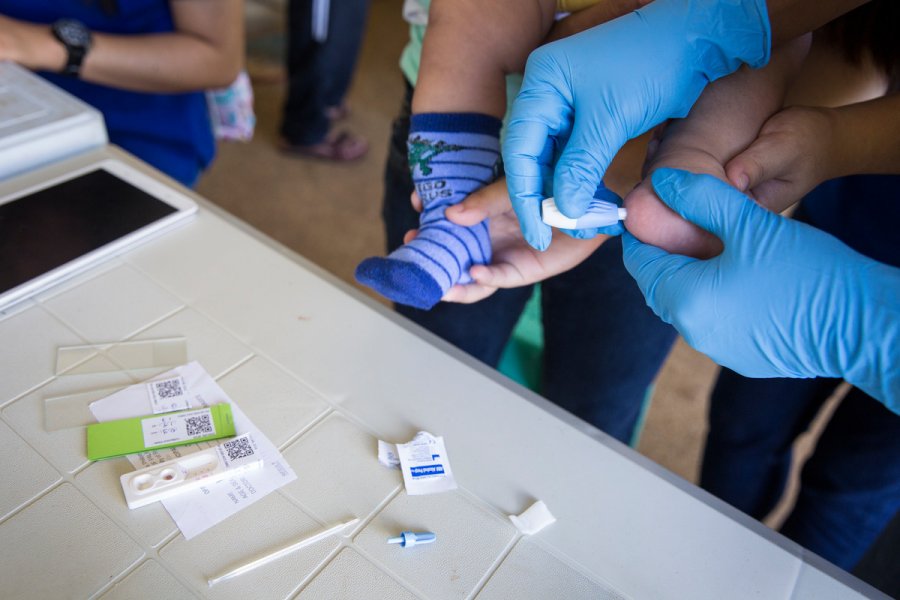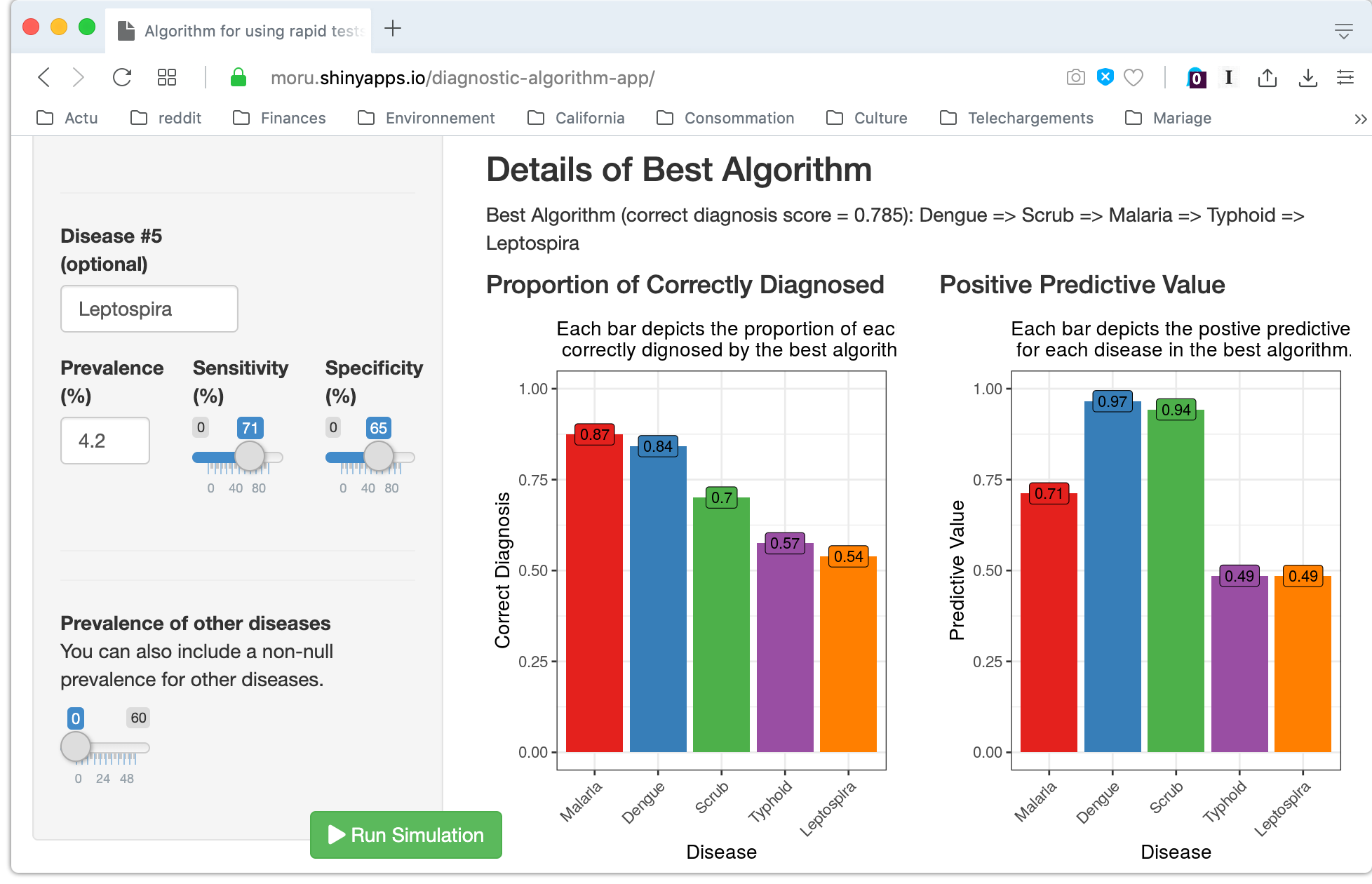Prioritizing Testing for Fever Diagnosis

Rapid diagnostic tests (RDTs) are medical diagnostic tests designed to be quick and easy to perform. RDTs are low-cost, simple to operate and read, and in use in a large number of low-resource settings.
We developed an App based on a simple mathematical model to help medical staff prioritise their use of RDTs.
Suppose that a feverish patient comes to a medical facility and that the patient has no symptoms to help differentiate from several different diseases (e.g. malaria, typhoid and dengue). Let’s also suppose that the medical facility is stocked with RDTs for the detection of these diseases. In which sequence should the RDTs be used in priority?
All things being equal, it depends on the prevalence of the disease as well as the sensitivity and specificity of the diagnostic tests available. For an in-depth take on the subject, read our related publication in Clinical Infectious Diseases (Pokharel et al. 2019) where we develop a diagnostic model is developed.
To provide a practical tool for decision makers, we created a web application of this diagnostic model. It can serve as a tool to identify the optimal diagnostic algorithm in different epidemiological settings, taking into account the local epidemiology and accuracy of available tests. Several preset settings can serve as a starting point for the App user.
